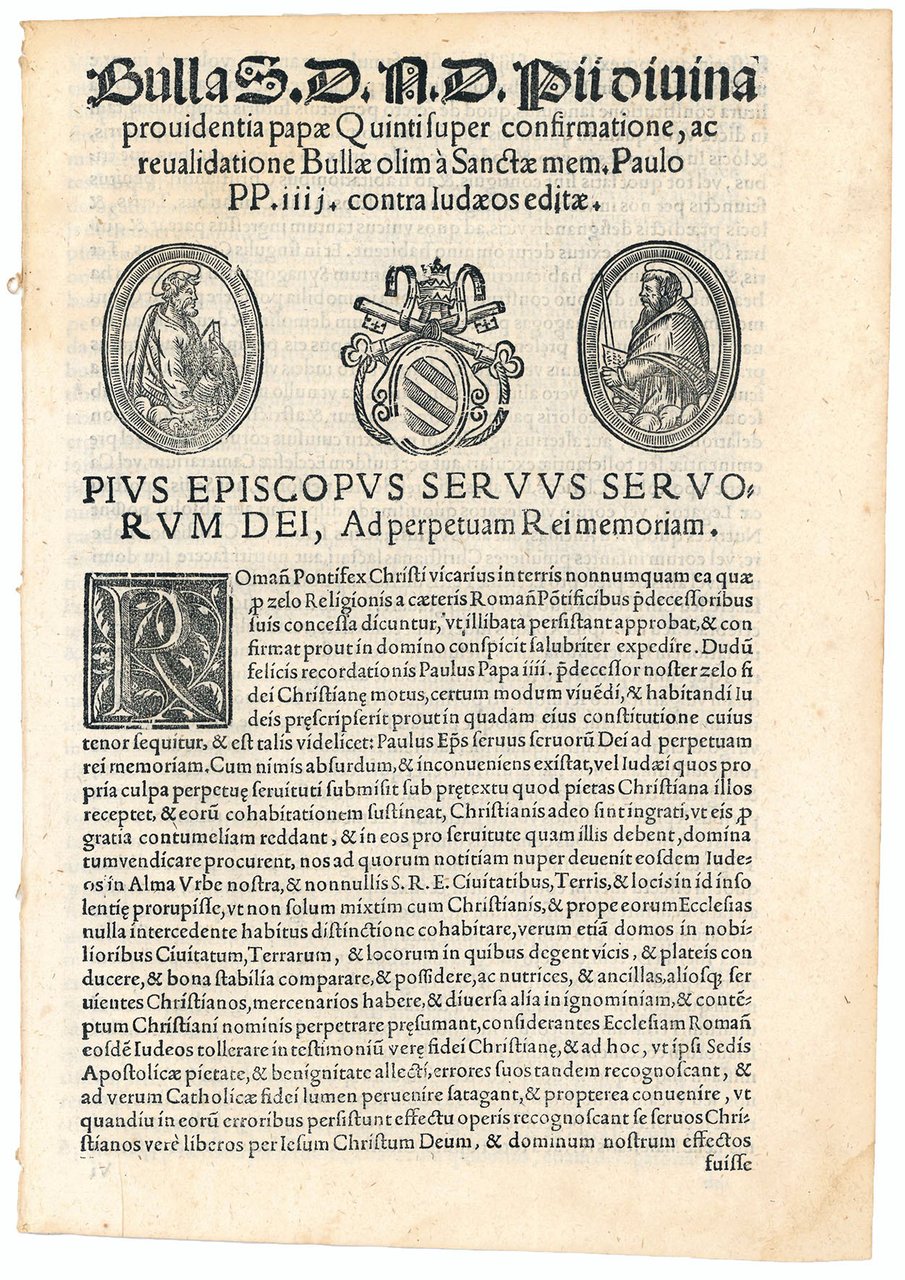
Livres anciens et modernes
PIUS V Pope (1504-1572)
Bulla S.D.N.D. Pij divina providentia papae Quinti super confirmatione, ac revalidatione Bullae olim à Sanctae mem. Paulo PP. IIIJ. contra Iudaeos aeditae. Colophon: Romae Apud Antonium Bladum Impressorem Cameralem. Anno. 1566
Antonio Blado, 1566
4900,00 €
Govi Libreria Antiquaria
(Modena, Italie)
Les frais d'expédition corrects sont calculés une fois que l'adresse de livraison a été indiquée lors de la création de la commande. Un ou plusieurs modes de livraison sont disponibles à la discrétion du vendeur : standard, express, economy, in store pick-up.
Conditions d'expédition de la Librairie:
Pour les articles dont le prix est supérieur à 300 euros, il est possible de demander un plan de paiement échelonné à Maremagnum. Le paiement peut être effectué avec Carta del Docente, Carta della cultura giovani e del merito, Public Administration.
Les délais de livraison sont estimés en fonction du temps d'expédition de la librairie et de la livraison par le transporteur. En cas de retenue douanière, des retards de livraison peuvent survenir. Les frais de douane éventuels sont à la charge du destinataire.
Pour plus d'informationsMode de Paiement
- PayPal
- Carte bancaire
- Virement bancaire
-
-
Découvrez comment utiliser
votre Carta del Docente -
Découvrez comment utiliser
votre Carta della cultura giovani e del merito
Détails
Description
The bull Romanus Pontifex was issued on 19 April 1566 and publicly affixed on 1 May 1566.
Pius V was “the pontiff who reinforced the dire edicts of Paul IV (1555-1559) and, then, in 1569, went further by expelling Jews from all parts of the Papal State, save Rome and Ancona […] Outside of the Papal State itself, Pius's policies did not always succeed; we see this clearly with regard to the Jews. Romanus Pontifex, of 19 April 1566, extended Paul IV's decree Cum nimis absurdum (which it cites verbatim), throughout all Catholic, or at least all Italian, realms, followed by Cum nos nuper of 19 January 1567, whose subject was the obligatory sale of Jewish private property or its devolution to a domus cathecumenorum or a monte di pietà, should the Jews not sell the property themselves. But these new bulls were not always applied. Or they were applied only years later […] The Jews of Rome thus had to cope with a permanent state of ambivalence, which was rooted in the already mentioned oxymoron of repression tempered by a degree of permissiveness. Jews could maintain their community, their methods of selfcontrol, their daily and family lives, and most importantly, that part of their economy – highly restricted as it had been from the time of Paul IV – that allowed some breathing room, namely, lending at interest, the income from which had a way of trickling down to benefit more than just the lenders themselves (at least until 1682 and the closing of Rome's Jewish banks, when near universal poverty ensued). But they had also been expelled, crowded together in a tiny precinct, and put under the thumb of a single (Inquisitional) overseer […] This ambivalent policy, the desire to repress Jews until they abandoned Judaism, paralleled by the obligation to observe limits, would remain in effect until the Roman Ghetto fell in 1870” (K. Stow, More than meets the eye: Pius V and the Jews, in: “Dominikaner und Juden: Personen, Konflikte und Perspektiven vom 13. bis zum 20. Jahrhundert”, E. Füllenbach & G. Miletto, eds., Munich-Boston, 2015, pp. 375, 378, and 392-393).
Edit 16, CNCE42201; S. Emerenziana Vaccaro, Catalogo delle edizioni romane di Antonio Blado Asolano ed eredi (1516-1593), Rome, 1961, no. 1924.

